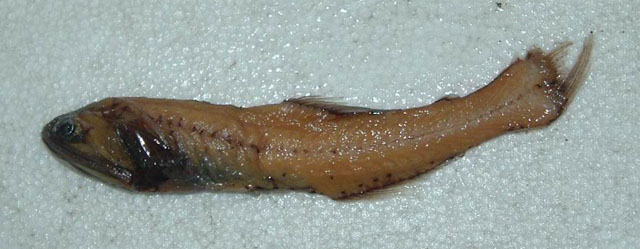| Myctophidae (Lanternfishes), subfamily: Lampanyctinae |
| 16.2 cm SL (male/unsexed) |
|
bathypelagic; marine, oceanodromous |
| Circumglobal from the Subtropical Convergence to south of the Antarctic Polar Front at Weddell-Scotia confluence and northern reaches of Ross Sea, and extending northwards to 21°S in meridional currents. |
|
Dorsal spines (total): 0-0; Dorsal soft rays (total): 13-16; Anal spines: 0-0; Anal soft rays: 15-19; Vertebrae: 36-38. 14-16 AO photophores; 9-12 tooth patches on the lower limb of the second gill arch; 34-38 lateral line organs (Ref. 36121). Pectoral fins relatively long and well developed in juveniles (easily visible in individuals up to about 6 cm SL), progressively becoming relatively shorter, with thicker rays, and covered by skin (in various stages of becoming vestigial between 5-8 cm SL). Adults (greater than 8 cm SL) with vestigial rays buried in skin and not externally visible unless skin abraded or otherwise torn (Ref. 36121). |
| Oceanic (Ref. 4479) and mesopelagic (Ref. 75154). Usually found below 500 m at night but shallower in upwelling regions. |
|
Least Concern (LC); Date assessed: 28 June 2018 Ref. (130435)
|
| harmless |
Source and more info: www.fishbase.org. For personal, classroom, and other internal use only. Not for publication.

